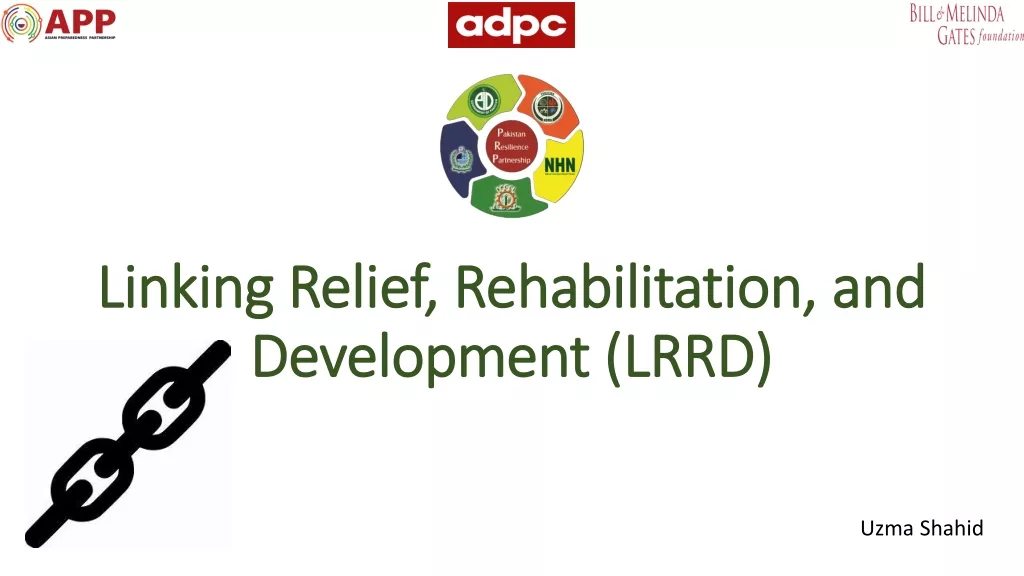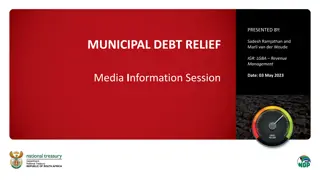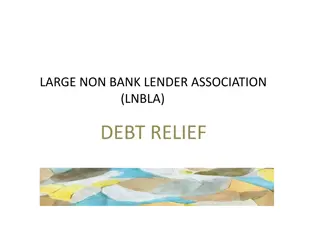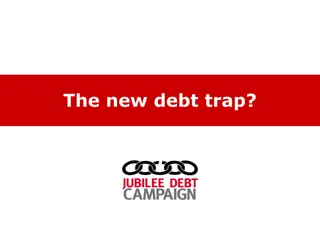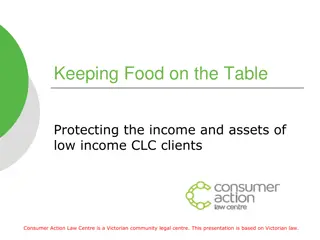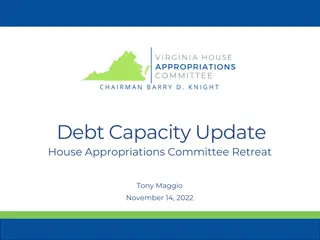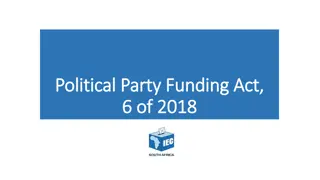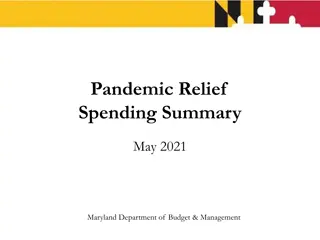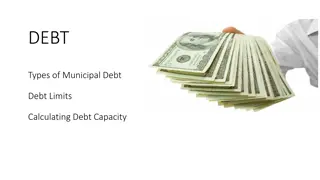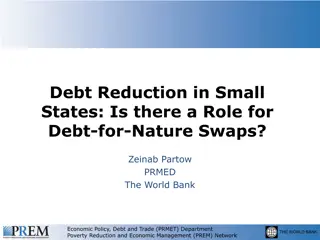Three-Party Funding Mechanism for Debt Relief and Climate Action Support in Developing Countries
Developing countries require significant financial support to address climate vulnerabilities, surpassing current commitments from developed nations. A suggested three-party funding mechanism aims to facilitate ongoing funding for climate projects while providing debt relief to vulnerable countries, especially considering the challenges posed by the COVID-19 pandemic. The Green Climate Fund (GCF) plays a crucial role in financing climate projects in developing countries, with over $20 billion committed by developed nations by the end of 2020 for 159 approved projects.
Download Presentation

Please find below an Image/Link to download the presentation.
The content on the website is provided AS IS for your information and personal use only. It may not be sold, licensed, or shared on other websites without obtaining consent from the author.If you encounter any issues during the download, it is possible that the publisher has removed the file from their server.
You are allowed to download the files provided on this website for personal or commercial use, subject to the condition that they are used lawfully. All files are the property of their respective owners.
The content on the website is provided AS IS for your information and personal use only. It may not be sold, licensed, or shared on other websites without obtaining consent from the author.
E N D
Presentation Transcript
DEBT FOR CLIMATE 3-party funding mechanism for debt relief and climate action support in developing countries Andrey Chicherin Green Climate Fund June 2021
Debt For Climate DEBT FOR CLIMATE Developing countries needs and required financial support to address climate vulnerabilities by far exceed available financial commitments of developed countries Mitigation and adaptation finance could play better role in catalyzing additional funding and involving developing countries in real support of GCF climate projects Economic consequences of COVID-19 pandemic create additional challenges to continue ambitious climate-related funding in traditional way Suggested 3-party funding mechanism could facilitate effective continuation of funding for climate projects and provide debt relief support for vulnerable countries
Debt For Climate GCF OVERVIEW Green Climate Fund ( GCF ) was established in 2010 as financing mechanism of United Framework Convention on Climate Change (UNFCCC) to finance climate mitigation and adaptation projects in developing countries Through initial resource mobilization and 2019 replenishment, developed countries committed over 20 billion US dollars to support climate projects across the world By the end of 2020 GCF approved 159 projects with total committed funding 7.3 bln US dollars
Debt For Climate INDICATIVE PROCESS STRUCTURE (1) Developed Country Creditor Sovereign Loan $ XX M Borrower Developing Country
Debt For Climate INDICATIVE PROCESS STRUCTURE (2) Contribution $ XX M Developed Country 3-party Assignment Agreement Sovereign Loan $ XX M Borrower Developing Country
Debt For Climate INDICATIVE PROCESS STRUCTURE (3) Contribution XX M Developed Country Commitment for project support $ XX M Conversion Commitment for project support (local currency) Developing Country
Debt For Climate FUNDING IMPLEMENTATION Project Investors Dedicated funds from DfC proceeds (XX M) Additional project funding (equity, loans, grants) Project funding Project Developing country
Debt For Climate GUARANTEE IMPLEMENTATION Guarantee fee Project Investors Dedicated funds from DfC proceeds (XX M) Guarantee XX M Counter Indemnity arrangements XX M Project Revenues XX M Project offtaker Developing country
Debt For Climate IMPLEMENTATION CONSIDERATIONS Debt-for-Climate (DfC) proceeds will be the key tool helping GCF to ensure interest alignment and risk allocation among the parties most suitable for bearing it Funding with DfC proceeds will help GCF to achieve greater levels of concessionality (including increased grant portion) and mobilize additional funding with structural subordination For guarantee implementation the longer the developing country ensures that project investors are receiving project revenues, the longer will GCF be able to guarantee other projects in the country (creating virtuous cycle with multiplier effect) Through the projects supported by the guarantee, the developing country will receive project investment and lower costs of goods/servies sold to the clients as the project output DfC proceeds can guarantee funds loaned by domestic banks in local currency and/or ensure longer maturity of the debt funding DfC proceeds can also guarantee foreign currency repayments (subject to the mirroring conditions of counter-indemnity arrangements with the developing country)
Debt For Climate ADVANTAGES FOR PARTICIPANTS Developed Country Developing Country Decreased risks and expenses for project financial infrastructure Additional financial resources for sustainable development Financial support of climate change projects Alignment of developing country interests with GCF projects support Optimal use of existing financial assets Decreased levels of hard currency indebtedness
Debt For Climate OTHER KEY CONSIDERATIONS Advantages: Additional financial inputs for projects funding Relieve contributing countries from monetary funding constraints Align recipient countries interest to facilitate GCF projects development Address local currency funding issues Bring more concessionality to the project funding mix The process may be applied to private portions of sovereign debt, increasing the amount of funding Facilitate financial development via additional support initiatives (e.g. climate projects guarantee platform)



